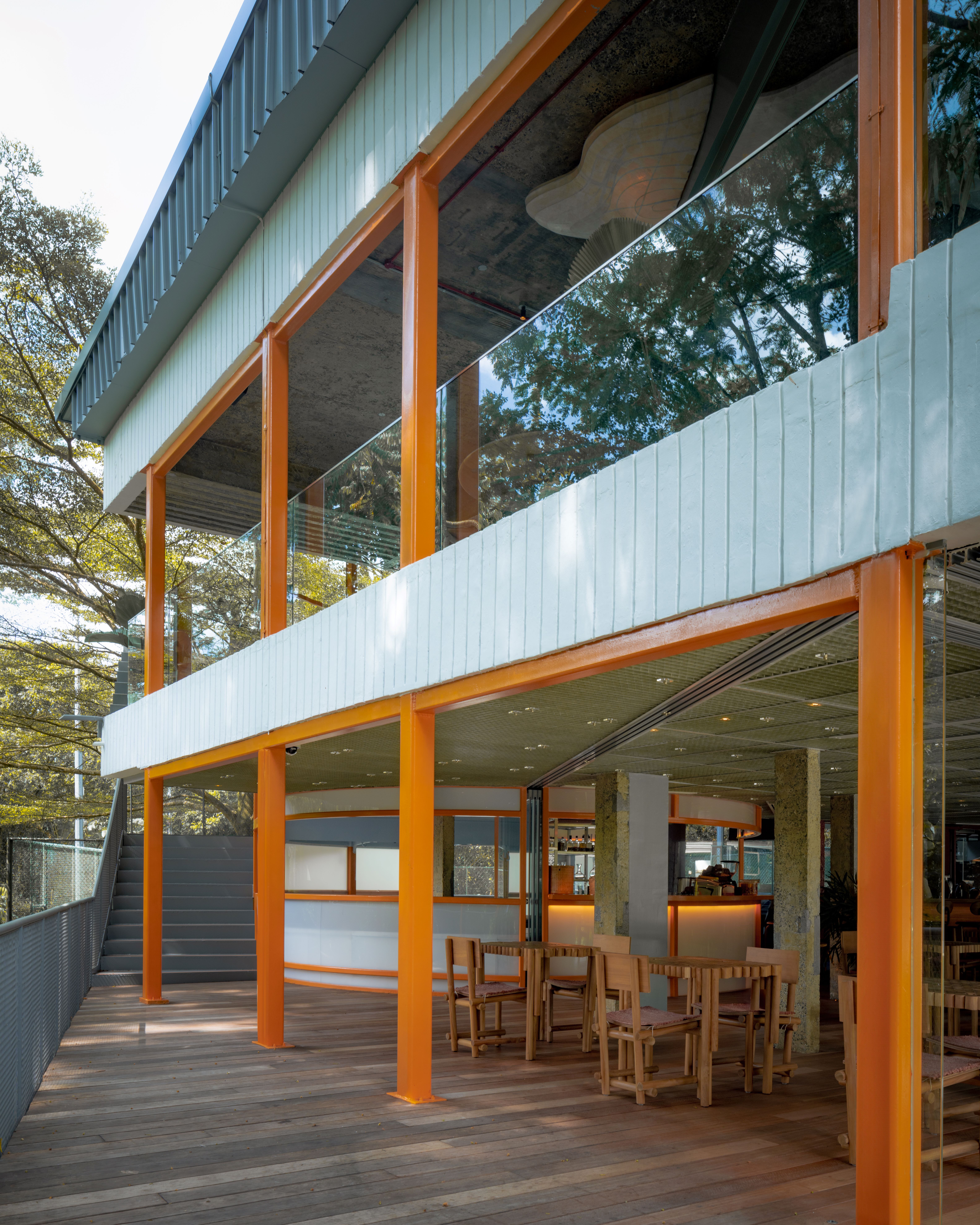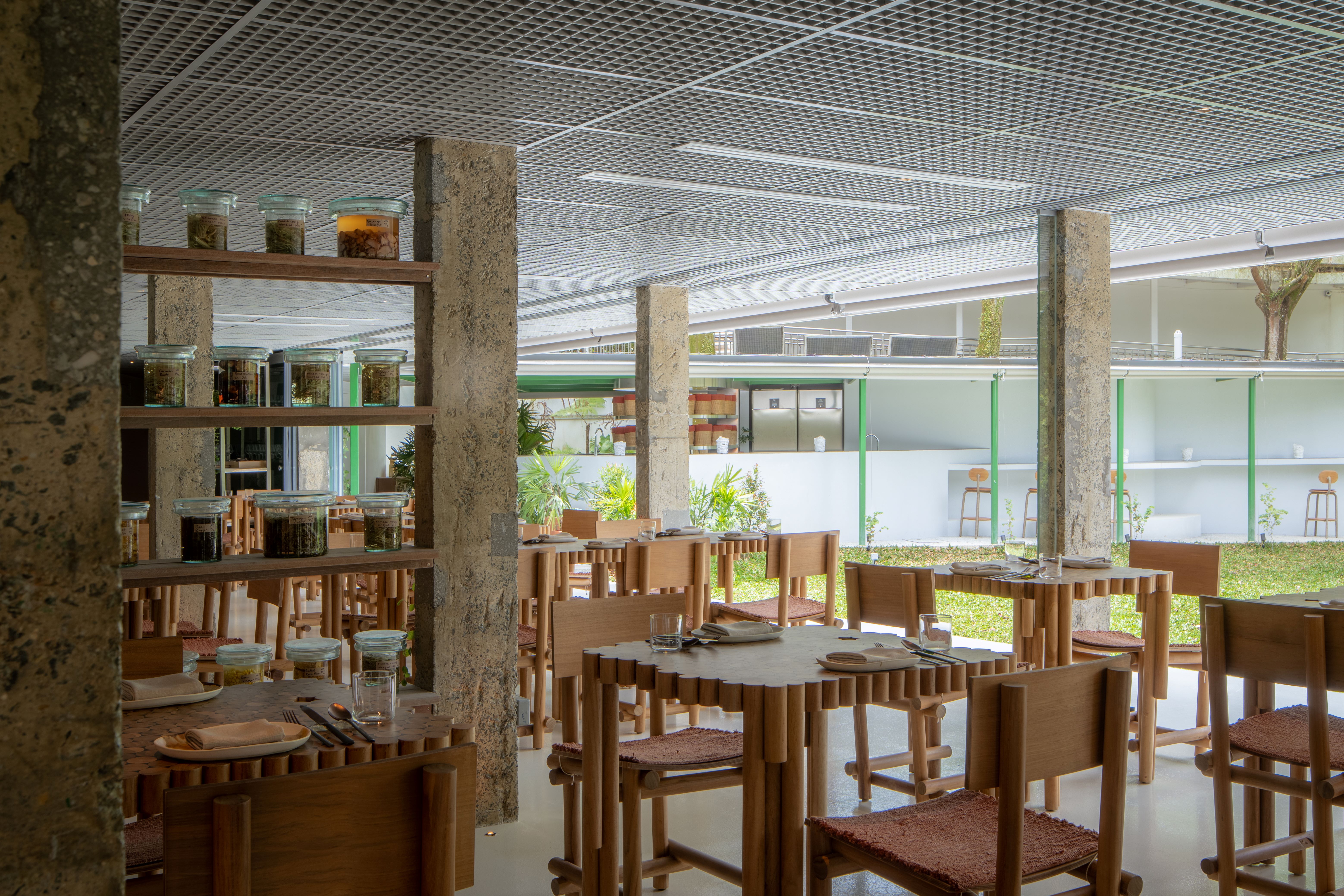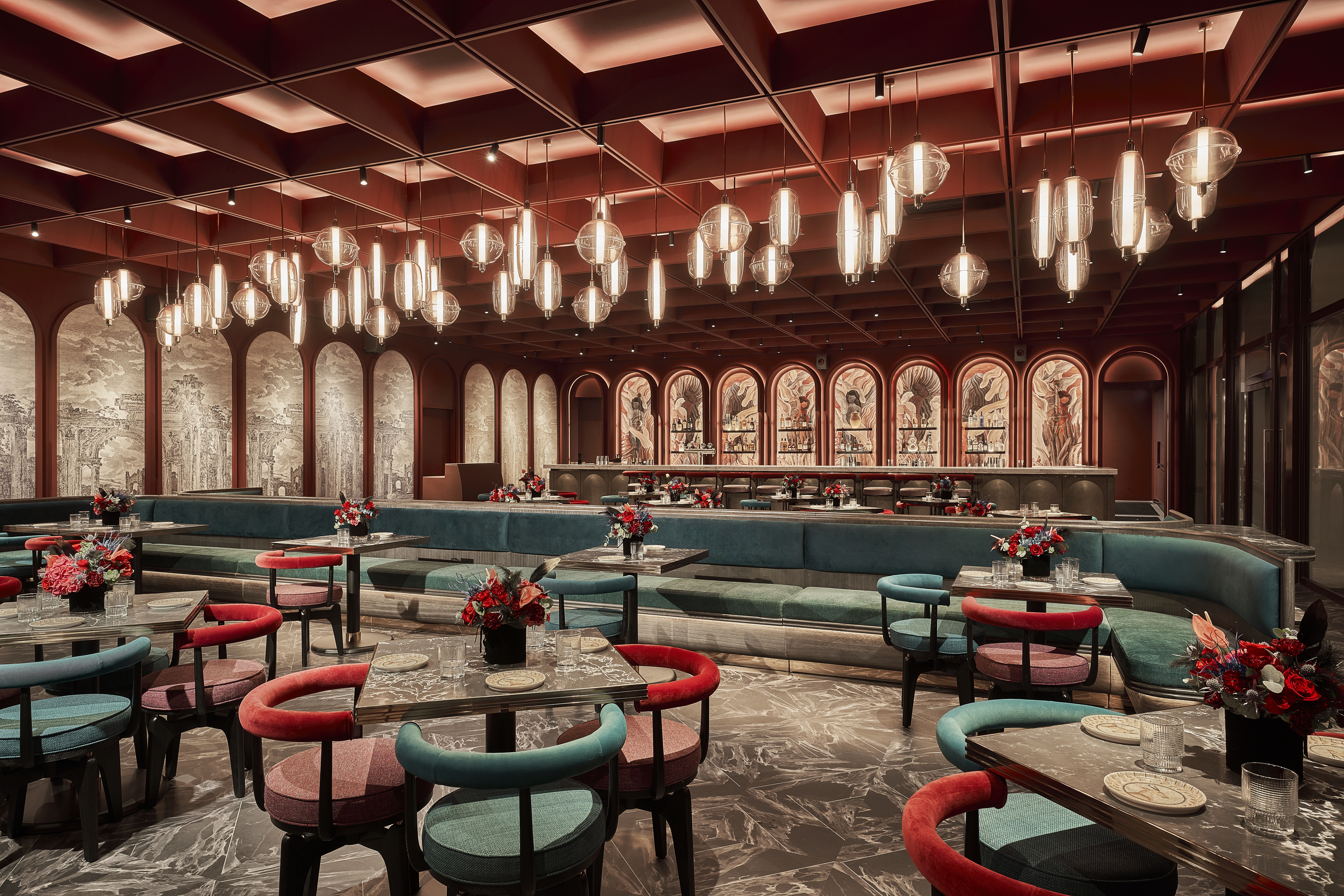
For the Indonesian restaurateur and hotelier Ronald Akili, the idea of food extends beyond simple notions of taste and presentation to embrace larger, almost existential koans of ‘Where does our food come from? How is it made? How does it connect us?’
These questions loom large in his latest Singaporean venture Air – an acronym for awareness, impact and responsibility – which aims to be not just a restaurant, but also a circular (read sustainable) culinary campus and cooking club. Aiding the cause is a crack team comprising long-time architecture collaborator OMA, which also worked on Akili’s Potato Head Studios, and powerhouse chefs Matthew Orlando (ex-head chef at Copenhagen’s Noma and Amass) and Will Goldfarb (Bali’s Room4Dessert).

AIR CCCC: circularity inspires the menu and the design
Set in sprawling 40,000 sq ft of extant jungle, greenery, and vegetable and herb gardens, the physical restaurant is a refurbished two-storey building that was once part of a clubhouse for the Singapore Civil Service Sports Council in the 1970s, its elegant, low-slung silhouette almost obscured by towering tropical trees.

The simple lines of the restaurant are complemented by the chefs’ culinary approach of actively using the byproducts of responsibly sourced food, such as fish bones, to discover new flavours and even new ingredients.
‘How were we to respond architecturally to such an innovative approach?’ asked the project’s co-lead, Shinji Takagi.


The answer lay in rejecting any notion of greenwashing, including importing recycled material from Europe, or installing expensive and, given the site orientation, relatively ineffective solar energy. Instead, the architects limited their major interventions to terracing a 100m-long winding walkway up from the car park, cleaning up the existing bones of the building, and relying on passive cooling and shading from the surrounding thick foliage.
All of which then leaves the stage clear for Orlando and Goldfarb’s offbeat menu that mines South East Asian produce with a gimlet eye for the novel and sustainable, not least lavash and noodles, both made of pressure-cooked fish bones, chocolate made of cocoa husks, leftover cashew pulp transformed into ricotta, and granita concocted from fermented papaya skins.
Receive our daily digest of inspiration, escapism and design stories from around the world direct to your inbox.


To the side of the open kitchen and bar, and the dining room dressed with handsome furniture made of recycled timber and plastic bottles by Spanish product designer Andreu Carulla, is a vitrine where the chefs conjure and experiment on projects that will eventually land on the ever-evolving menu.
Besides the challenge of connecting the building to nature, OMA’s co-project lead, David Gianotten, says Air has been a complex juggling act that involved integrating the visions of an ambitious entrepreneur, two world-renowned chefs, a product designer and OMA as architects. ‘We had many discussions and workshops which in the end led to the current result, which we believe reflects our collective uncompromised vision of all of us.’


Daven Wu is the Singapore Editor at Wallpaper*. A former corporate lawyer, he has been covering Singapore and the neighbouring South-East Asian region since 1999, writing extensively about architecture, design, and travel for both the magazine and website. He is also the City Editor for the Phaidon Wallpaper* City Guide to Singapore.
-
 The rising style stars of 2026: Oscar Ouyang is taking knitwear into new realms
The rising style stars of 2026: Oscar Ouyang is taking knitwear into new realmsAs part of the January 2026 Next Generation issue of Wallpaper*, we meet fashion’s next generation. Born in Beijing, Central Saint Martins graduate Oscar Ouyang is inspired by anime, medieval folklore and his friends’ wardrobes
-
 Zbeul Studio's 'future relics' merge traditional craft with unexpected materials
Zbeul Studio's 'future relics' merge traditional craft with unexpected materialsWallpaper* Future Icons: Paris-based studio Zbeul merges archaeology, craft, and design, taking the design process to innovative places
-
 Deep dive into Carlos H Matos' boundary-pushing architecture practice in Mexico
Deep dive into Carlos H Matos' boundary-pushing architecture practice in MexicoMexican architect Carlos H Matos' designs balance the organic and geometric, figurative and abstract, primitive and futuristic
-
 No guilt, only pleasures await at Singapore’s first all-villa resort
No guilt, only pleasures await at Singapore’s first all-villa resortFrom late-evening scented baths to midnight snack attacks, daily indulgences come in abundance at the tropical Raffles Sentosa Singapore
-
 Wallpaper* checks in at The Standard Singapore for a quirky tropical city break
Wallpaper* checks in at The Standard Singapore for a quirky tropical city breakDisarming and energising in equal measure, The Standard Singapore is a lush addition to the brand’s growing Asia-Pacific portfolio
-
 Singapore bar and lounge Baia revives the opulence of Ancient Rome
Singapore bar and lounge Baia revives the opulence of Ancient RomeDaven Wu samples Baia’s bacchanalian cocktails and louche slouching spots that are drawing the crowds in Singapore
-
 Wallpaper* checks in at QT Singapore, a plush hotel amidst wondrous skyscrapers
Wallpaper* checks in at QT Singapore, a plush hotel amidst wondrous skyscrapersSet within an elegant neo-classical building, QT Singapore blends playful design and modern luxury in the heart of the city’s Business District
-
 Odem, Singapore’s first craft Makgeolli bar has arrived
Odem, Singapore’s first craft Makgeolli bar has arrivedAn extensive collection of Makgeolli, also known as Korean rice wine, can be enjoyed at this new bijou bar and restaurant in Singapore
-
 Inside Na Oh, Hyundai and Corey Lee’s experimental Korean restaurant in Singapore
Inside Na Oh, Hyundai and Corey Lee’s experimental Korean restaurant in SingaporeAcclaimed San Franciscan chef Corey Lee is the driving force behind Na Oh, a new Korean restaurant at the Hyundai Motor Group Innovation Center Singapore
-
 Eastern and Western flavours meet at Jiak Kim House in Singapore
Eastern and Western flavours meet at Jiak Kim House in SingaporeJiak Kim House, led by Chef Seow Tzi Qin, pays a heartfelt tribute to Singapore's vibrant history through traditional and contemporary dishes
-
 The Singapore Edition makes the case for opulence
The Singapore Edition makes the case for opulenceThe new Singapore Edition, the work of Moshe Safdie and local studio DP Architects, with interiors by Cap Atelier, embraces leafy luxury